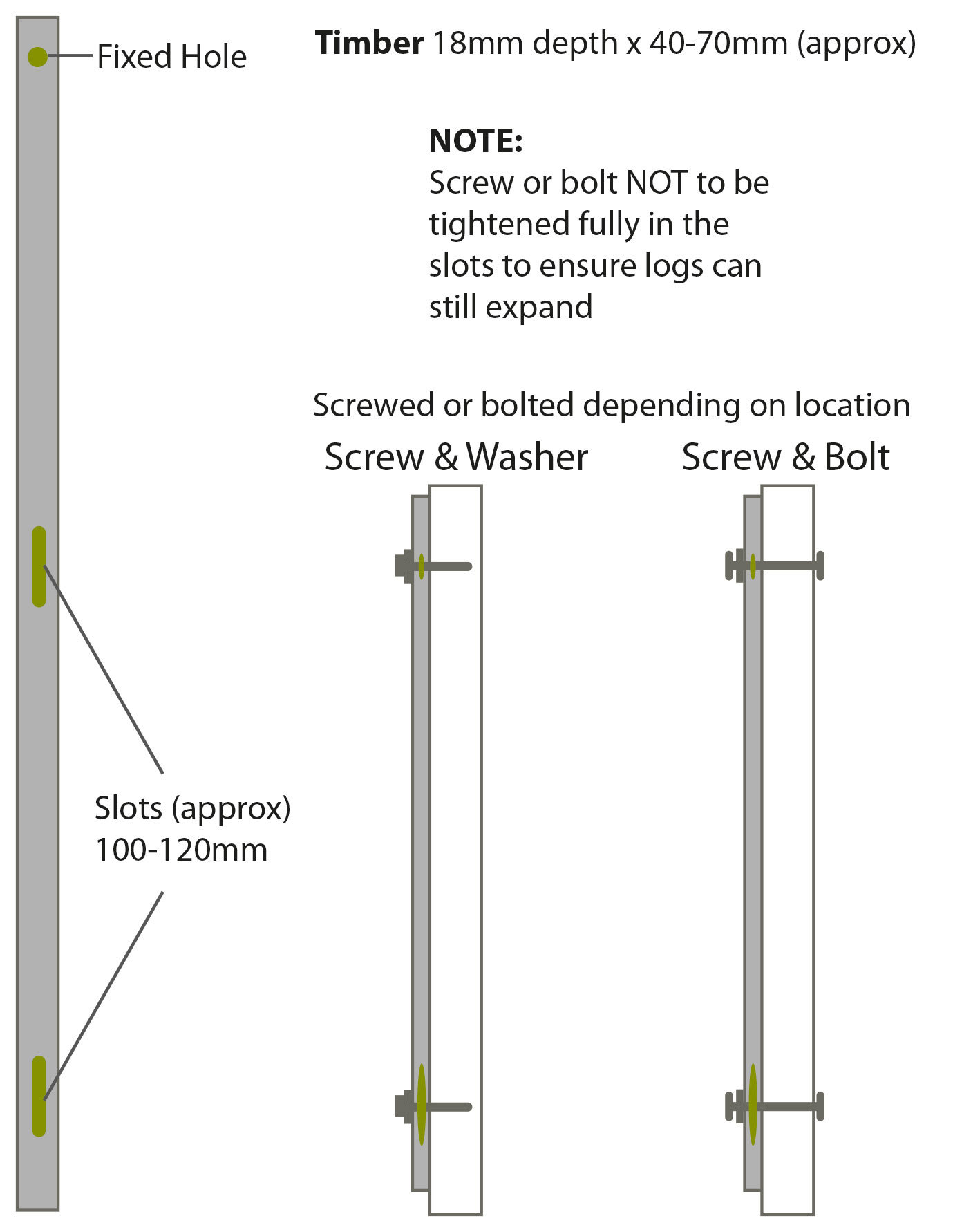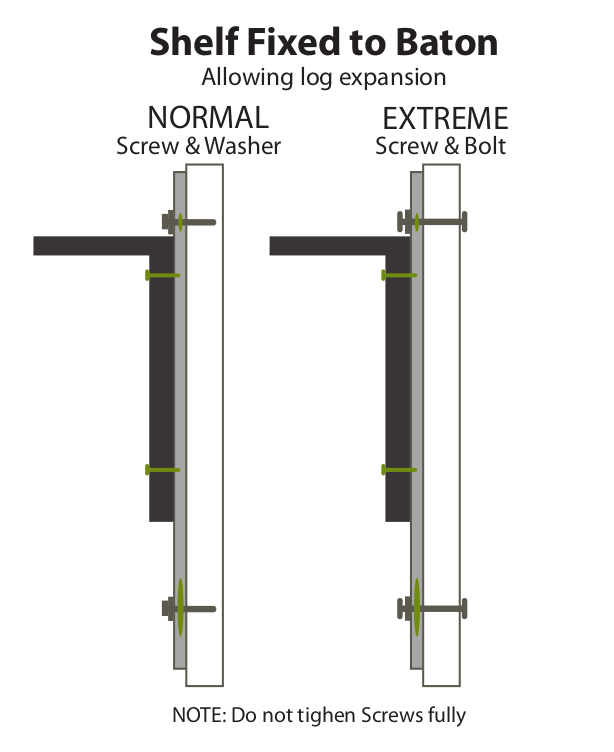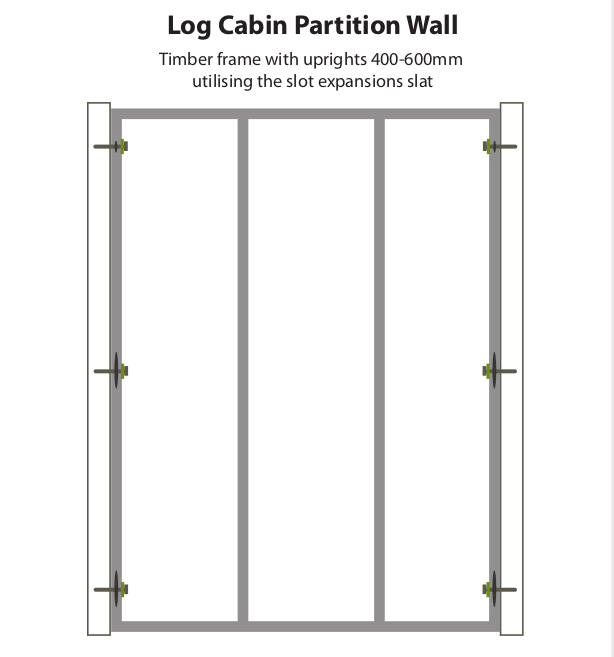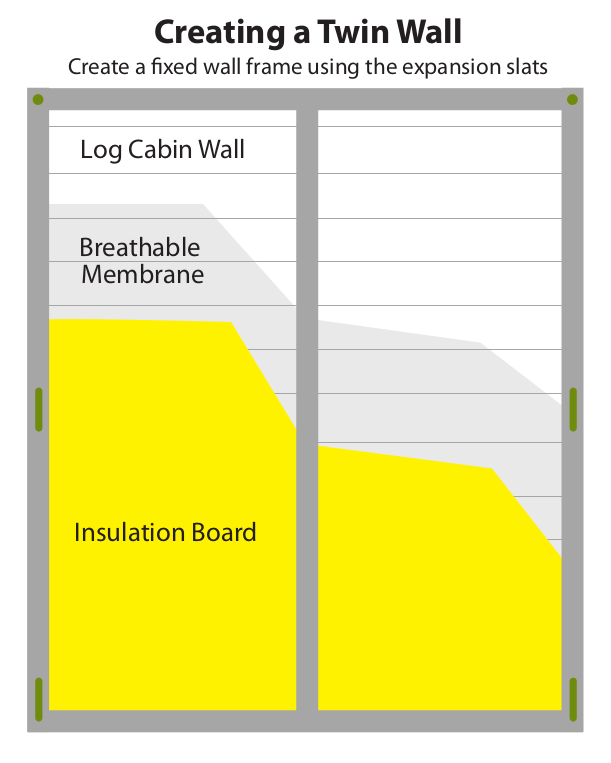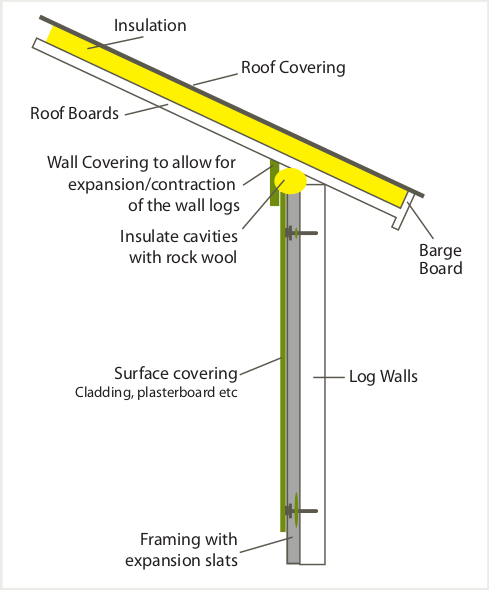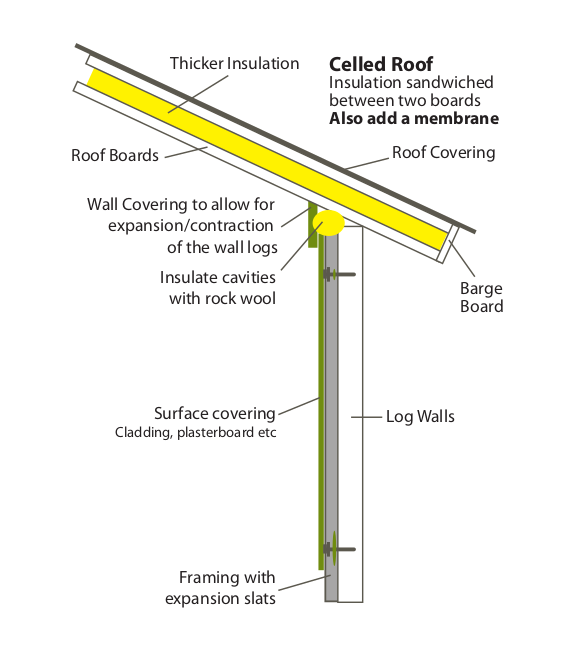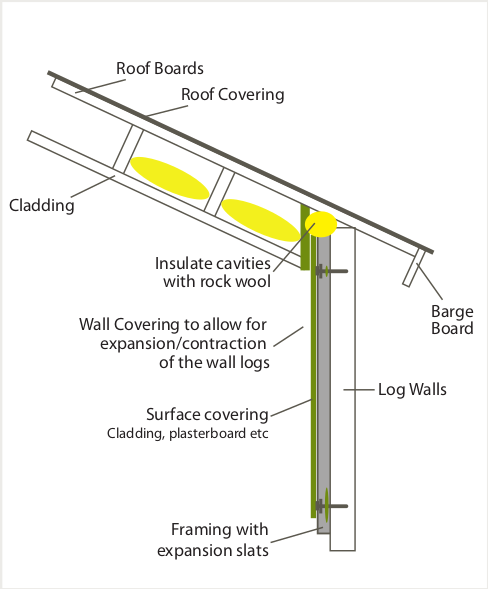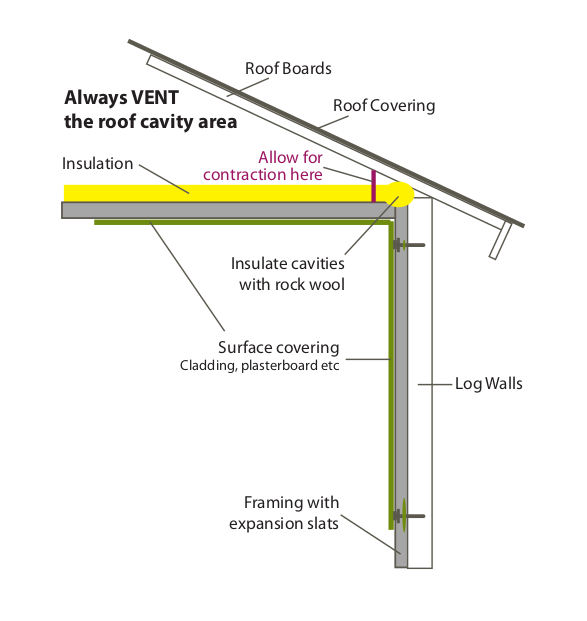EXPANSION & CONTRACTION
We know that Log Cabins move and certainly within the first year of life they can move quite a bit from moisture content in log cabins which greatly effects the expansion and contraction of the wall logs.
The annoyance is this movement can be a problem if we want to put things on the wall. You may even want to partition a section of your cabin to perhaps you want a shower or a toilet or just a separate storage area. You might also want a thinner log building due to your budget but you would like to insulate the walls.
All of this can be achieved but to do so we need to keep in mind that the log cabin will move and we don’t want to stop this movement. If we do inhibit this natural movement we can cause a lot more problems to the log cabin as listed below:
- Splits in the logs
This will normally be caused by logs being held together - Gaps appearing where logs have been held
Normally by a window frame being screwed to the logs - Moisture entering through gaps and splits
READ ALL THE INFO BELOW TO AVOID THE ABOVE ISSUES
EXPANSION SLAT FOR LOG CABINS

This is a handy bit of wood and you can make it out of left over floor-boards or roof boards. Any timber will suffice though and you will pick the thickness depending on the job you want it to do.
Make for use as storm braces when they are in exposed locations, off cuts from the roof or floor boards is fine to use and you then position them behind the corner interlocks so they’re not really seen. This slat will then be fixed to the top most log and the bottom of the slat to a lower log, this then ties the whole cabin together.
The very simple principle here is that we have one fixed hole at the top and slots in the middle and end (depending on the length). The top hole is screwed tight and using a washer the slot fixings are not tightened fully so allowing the logs to move behind the bracket.
SHELF FIXING IN A LOG CABIN

You will see from the diagram that we are fixing the shelves to the expansion slat and not to the logs. For heavier duty uses you may want a thicker slat and you may want to bolt it fully through the log cabin wall.
This is also needed for securing cupboards to the walls and especially useful for electricians when securing a consumer unit.
NOTE: in the first month or so a log cabin will settle quite a bit from first being erected so it’s best to leave it for a few weeks before adding brackets and securing fittings. Within the first year the cabin will move the most as the wood needs to ‘die’ a little more. Year two will be a little less. Years three, four and onwards the movement is hugely reduced. Also remember the most important thing with a log cabin is to properly treat it. Proper treatment with a good depth of treatment will greatly inhibit the natural contraction and expansion and reduce it to a minimum.
PARTITION WALLS IN LOG CABINS

The same as you do in your home you may wish to put a partition wall into your log cabin for any number of reasons. You can do so as long as you remember the log cabin is always moving.
Using the simple principle of the ‘expansion slat’ explained above we can create slots in framing and make a wall as any stud wall would be made remember though the slot fixing should not be fully tight and always allow the logs to still move in both contraction and expansion.
TWIN-SKIN LOG CABINS

Using the same principle with the expansion slat we can create framing internally against the wall. The frame will of course depend on the depth of insulation required but employ the same methods and remember the logs need to move independently.
NOTE: Building control will ask for a breathable membrane, followed by a small air gap, and then the insulation in between the frame.
On top of the frame you will place your surface covering. Timber logs of 28mm looks good or use a thinner cladding for economy or perhaps plasterboard for a smooth sleek, modern finish.
ROOF INSULATION

INSULATION ON TOP OF ROOF
Make sure you allow enough room for contraction. Keep the inner framing below the roof boards as with contraction there is a chance the boards could sit on top of the frame making the wall logs separate.
A fascia suspended from the ceiling that will sit in front of the inner wall but is not connected to it al-lowing it move up and down as the log cabin expands and contracts. Fill any cavity created with fibreglass insulation wool so it can also move.
INSULATION ON TOP OF ROOF BETWEEN TWO BOARDS
We recommend 40mm – 50mm thick insulation. If you are going to use thicker which you may want to, you would need to ‘cell’ the roof and board on top of the insulation:
NOTE: Some building control officers will ask for 100mm in the roof. To do this you will need to create a tray on the roof, then ‘cell’ the tray and put in the insulation board with a final board on top and then the final roofing material. You may also wish to consider adding a breathable membrane.
SUMMARY

Log cabins are an extremely versatile building and they can be used for any number of uses from a garden shed all the way up to a living log home. They will all behave the same and will all move all the time. So as long as you remember this and allow for this you can do anything you want to them. Including partition walls and internal insulating walls as shown.
NOTE: These are guidelines to use and not detailed plans with measurements and the drawings are NOT to scale. If you go on to carry out any of these procedures you will need some knowledge and understanding of the processes and materials involved.
One last thing: the windows and doors are also part of the outside wall so don’t join any of your internal framing to the doors or windows in anyway, treat them exactly the same as the logs.
For any further information and question please call us our contact details are below.

CALL 01202 797 211
admin@livingoutsideltd.co.uk
www.livingoutsideltd.co.uk




